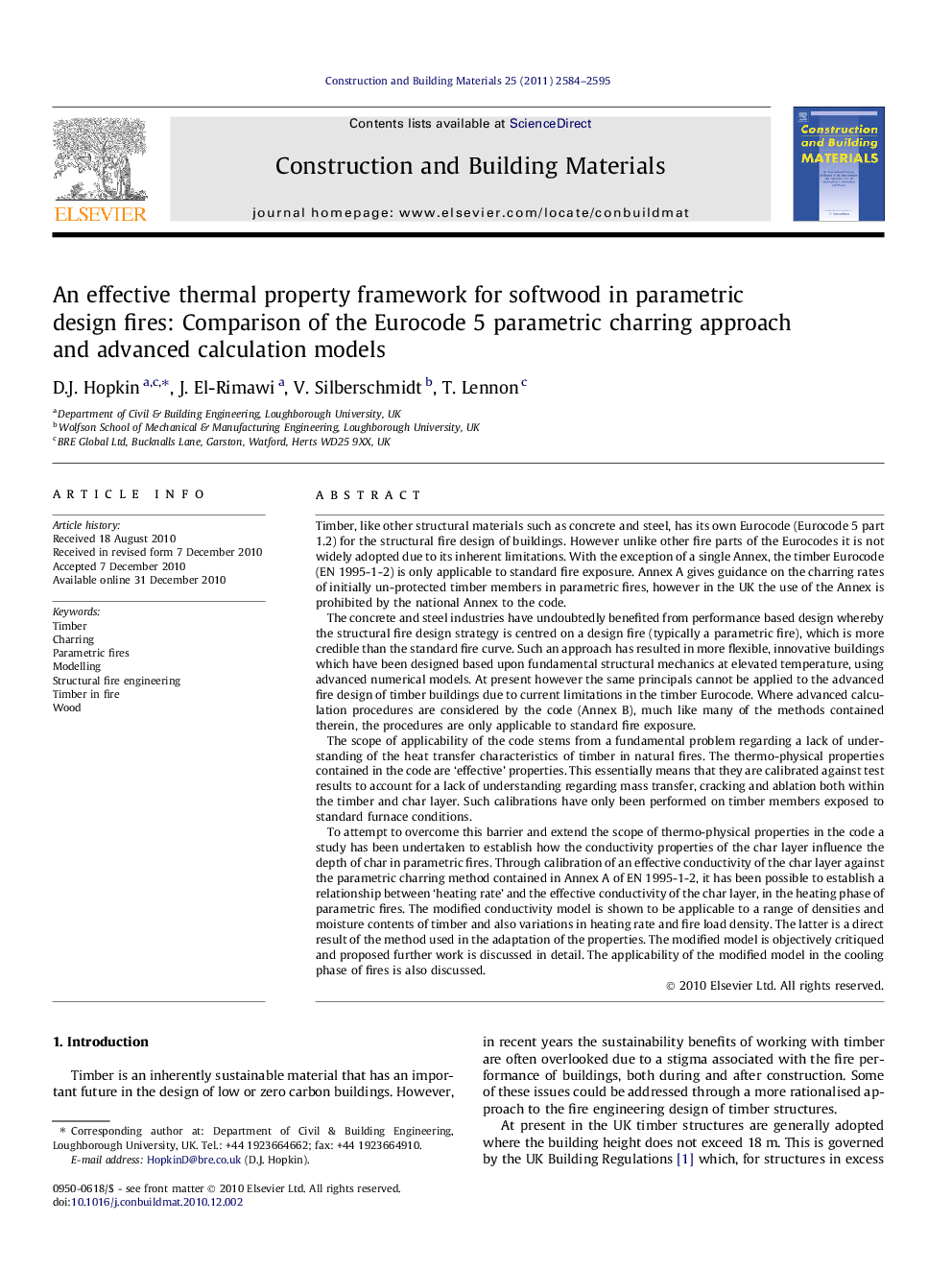| کد مقاله | کد نشریه | سال انتشار | مقاله انگلیسی | نسخه تمام متن |
|---|---|---|---|---|
| 259299 | 503631 | 2011 | 12 صفحه PDF | دانلود رایگان |

Timber, like other structural materials such as concrete and steel, has its own Eurocode (Eurocode 5 part 1.2) for the structural fire design of buildings. However unlike other fire parts of the Eurocodes it is not widely adopted due to its inherent limitations. With the exception of a single Annex, the timber Eurocode (EN 1995-1-2) is only applicable to standard fire exposure. Annex A gives guidance on the charring rates of initially un-protected timber members in parametric fires, however in the UK the use of the Annex is prohibited by the national Annex to the code.The concrete and steel industries have undoubtedly benefited from performance based design whereby the structural fire design strategy is centred on a design fire (typically a parametric fire), which is more credible than the standard fire curve. Such an approach has resulted in more flexible, innovative buildings which have been designed based upon fundamental structural mechanics at elevated temperature, using advanced numerical models. At present however the same principals cannot be applied to the advanced fire design of timber buildings due to current limitations in the timber Eurocode. Where advanced calculation procedures are considered by the code (Annex B), much like many of the methods contained therein, the procedures are only applicable to standard fire exposure.The scope of applicability of the code stems from a fundamental problem regarding a lack of understanding of the heat transfer characteristics of timber in natural fires. The thermo-physical properties contained in the code are ‘effective’ properties. This essentially means that they are calibrated against test results to account for a lack of understanding regarding mass transfer, cracking and ablation both within the timber and char layer. Such calibrations have only been performed on timber members exposed to standard furnace conditions.To attempt to overcome this barrier and extend the scope of thermo-physical properties in the code a study has been undertaken to establish how the conductivity properties of the char layer influence the depth of char in parametric fires. Through calibration of an effective conductivity of the char layer against the parametric charring method contained in Annex A of EN 1995-1-2, it has been possible to establish a relationship between ‘heating rate’ and the effective conductivity of the char layer, in the heating phase of parametric fires. The modified conductivity model is shown to be applicable to a range of densities and moisture contents of timber and also variations in heating rate and fire load density. The latter is a direct result of the method used in the adaptation of the properties. The modified model is objectively critiqued and proposed further work is discussed in detail. The applicability of the modified model in the cooling phase of fires is also discussed.
Research highlights
► Current limitations relating to the simulation of fire exposed timber structures are outlined.
► Modified conductivity models (MCM) for softwood (based on EN 1995-1-2) are proposed.
► The MCM properties are dependant upon heating rate and duration of heating.
► The modified property framework is shown to be very capable at predicting charring depths.
► Application of the MCM’s are found to be most accurate in the heating phase of a parametric fire.
Journal: Construction and Building Materials - Volume 25, Issue 5, May 2011, Pages 2584–2595